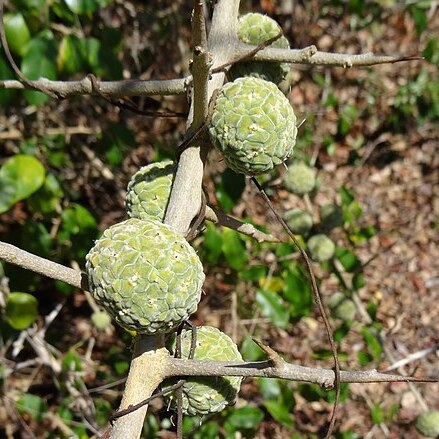A spiny shrub. It can be a scrambler or a small tree up to 8 m high. The bark is creamy-brown. The side branches have spines at the end. The leaves are simple and alternate. They are oval and 3-9 cm long by 2-4 cm wide. They are dark green. They can taper towards each end. The edges roll slightly under. The male and female flowers occur on separate trees. They are white and have a sweet scent. They occur in small dense heads. These are about 1.5 cm across. The fruit is a head of small nutlets. They have a soft edible pulp.
Leaf lamina elliptic to lanceolate (or subcircular), 1.5–9 x 1–4.5 cm., subcoriaceous; apex obtuse to subacute, to shortly acuminate or emarginate; base acute to obtuse; margin entire; superior surface (almost) glabrous, inferior surface sparsely puberulous; lateral veins 4–12 pairs, with the tertiary venation reticulate; petiole 3–30 mm. long; stipules up to 0.2 mm. long, persistent.
Shrub or small tree, up to 8 m high, often scrambling, spiny. Fruit a head of small nutlets, each surrounded by persistent perianth parts: thick and fleshy, forming a pulp, greyish. Flowers white.
Tangled, spiny shrub, or scrambler up to 7(8) m. tall, or small much-branched tree; branches long, weak; branchlets up to 10 cm. long, ending in a spine.
Pistillate inflorescence 0.5–0.8 cm. in diam., to 1.8 cm. in fruit; peduncle 1–5 mm. long; stigmas up to 13 mm. long.
Staminate inflorescences 0.5–1.5 cm. in diam., peduncle 0.5–2 cm. long.
Fruit ovoid, 6–7 mm. long.


